Introduction
Office work has turned from a single office into a community office in the USA in 1960. Close work spaces give workers little privacy. Developing cubicles complicated this problem in 1964. Open-plan offices were established in the USA in 1970 and then extended to Europe. A counter trend of larger offices was realized in the turn of the millennium in the course of digitization, while home office became popular (Messenger and Gschwind, 2016). Before the Coronavirus Pandemic, the scope of home office use was increasing steadily (Statista, 2019). Today, the affinity to home office is rapidly increasing because of the COVID-19 Pandemic, which is a worldwide challenge for people’s health and companies’ and workers’ existence, similar to the Spanish Influenza Pandemic, which took place in the beginning of the 20th century at the end of the First World War. Home office, in the time of the Pandemic, implies an emergency program from companies to survive. Actually, the Pandemic couldn’t be foreseen and was completely unexpected. Companies had to react rapidly, and bankruptcies could not be prevented. According to Statista (2020a), a prognosis by Euler Hermes SA Paris for 2021, compared to 2019, indicated that the USA will witness 57% more bankruptcies and Germany 12%. Companies’ ratio of teleworking has continuously increased during the last years and rapidly increased during the last months. While state required regulations have been entailed in order to dam the virus, digitization paired with teleworking has managed to keep workers’ jobs and companies on the market. Home office has become an immediate integral and essential part of the working world in contrast to the past years. Three components of teleworking can be distinguished. Teleworking, called as home office, is where the worker’s workplace is his home. Alternating teleworking is characterized as a partial time home office mixed with the coordinated working times of the office at the company’s headquarter. Mobile teleworking consists of varying workplaces, mainly utilized by representatives and account managers (Padilla-Meléndez and Del Aguila-Obra, 2008). The Federal Ministry for Agriculture, Regions and Tourism (2018) stated that teleworking produce better work quality in terms of attractiveness and productivity due to better concentration, less distraction, and less driving times to the office, and thus saving time for getting the work done. Assessments of higher efficiency of the meeting results through better coordination and cooperation, enabling more personal responsibility and optimizing the work-life balance were also noted (Steiner-Ostermann, 2018). Teleworkers contribute to environment and climate protection by reducing car traffic. For cashiers and mechanics on the assembly line, working from home is not suitable; however, other occupations such as conception, controlling, customer care, editorial staff, personnel planning, appraisal and programming tasks, accounting and documentation are considered suitable for home office work. Requirements for a home office worker are self-reliance, reliability, tech-savvy, equipment availability at home, voluntariness, and ability to work within a teamwork. Considering the demographic changes in the last five years, home office adapted to companies’ and workers’ needs, representing a possible work structure for workers, who cannot find accommodation in the cities. Home office could be a great opportunity to revive the rural areas. According to the European Parliament in Brussels (2019), significant demographic contrasts can be observed between the core and the periphery in the EU and EU Member States. Population growth has been determined in eastern Ireland, the southern part of the United Kingdom, Belgium, Netherlands and Austria. Parts of western Germany, northern Italy and Scandinavia have benefited from population growth. Trends show an increasing concentration of population in certain urban areas and a depopulation of some rural areas. About 3.1 million first residence permits were issued to non-EU citizens in the EU in 2017. One out of five first residence permits were issued in Poland mainly due to migration from Ukraine, followed by Germany with 17%, the United Kingdom 16%, France 8%, Spain 7%, Italy 6% and Sweden 4%. The fastest expanding populations in 2016 were often concentrated in eastern Ireland, western Germany and southern Sweden. Most of the studies on teleworking focus on employees in general and do not differentiate between managers, employers and employees. A survey conducted by the German health insurance DAK on workers from April to May 2020 clarified the impact of home office from workers’ point of view (Bodanowitz, 2020). An actual survey carried out by the University Heinrich Heine in Düsseldorf in Germany collected data from respondents, who were asked to provide assessments of the work situation before COVID-19, to answer questions about their current situation regarding home office during the Pandemic and to differentiate between managers and employees. Kempf (2015), a scientist of Bitkom Research, particularly interviewed 1500 managing directors and HR managers from companies with 3 or more employees from all industries in 2015. The survey is a representation of the overall economy in Germany. The results show significant positive effects of teleworking and give recommendations for adjustments and improvements related to the teleworking structure within companies. An expansion module of teleworking and a counterforce against overpopulation in cities is represented by co-working. A worldwide movement related to work in rented offices was initialized by freelancers and micro-enterprises in Silicon Valley in the USA in 2005 in opposition to the latent home office, which isolated them from colleagues and chiefs. While co-working workers join a community, established companies were interested in this new form of office work. Employees of different companies are able to work in these offices. There, they work for their own project, can exchange ideas and knowledge with each other and can benefit from each other. Half a million workers in 2015 and more than one million workers in 2017 are counted in co-working spaces (Weibel and Sapegina, 2018). The existing research on teleworking is extensive and detailed towards applied questionnaires. It remains to be examined if there is a scope of teleworking regarding long term teleworkers, which signalized a threshold over which an amount of teleworking has a negative influence on the job satisfaction and respectively productivity.
Relationship between teleworking and job satisfaction
According to Fernández-Macias and Muñozde Bustillo Llorente (2014), job satisfaction is the degree to which people like their jobs. In other words, it refers to a subjective evaluation that the worker makes of his/her own job, either in its entirety or with respect to its different attributes. It is related to the sociological concept of alienation and the economic concept of the (dis) utility derived from work. With respect to them, job satisfaction has a more positive connotation; it is defined in a more subjective way, and has a stronger empirical orientation. Psychology, being the research field of studying the organizational behavior, is interested in analysing the significance of the positive organizational behavior for enhancing desired work-related outcomes, while job satisfaction is a central issue.
While companies are aiming to stay competitive on the market, they are forced to evolve strategies to be successful. Strategies in teaching and leading by stimulus, using methods for encouraging persistence in behaviour, are potentials for achieving goals (Woolfolk, 2010). Organizations, and especially companies, would benefit from improving successful strategies to provide their employees with the desired stimulus to achieve job satisfaction, which will ultimately be reflected on their performance.
A large study on the American workforce indicates that workplace effectiveness (i.e., workplace flexibility, management decision-making involvement, positive co-worker support, learning opportunities, supervisor support for success, and job autonomy) is related to the overall job satisfaction, engagement and retention (Jacob et al., 2008). Various and mixed researches with conclusions to the topic are carried out.
Telecommuting has positive as well as negative effects on job satisfaction (Bailey and Kurland, 2002). Some researchers found curve linear effects (Guimaraes and Dallow, 1999), while some inverted U shape linearity effects of the relationship between telecommuting and job satisfaction (Golden and Veiga, 2005). It implicates that up to a threshold of teleworking hours, the job satisfaction decreases, which can be a guideline for managers and employees themselves. Figure 1 primarily indicates the coherences between the telecommuting intensity and individual outcomes.
According to Gajendran and Harrison (2007), Charalampous et al. (2019) and Golden and Veiga (2005), an increase of the telecommuting intensity in an adequate range could result in a growth of individual outcomes, in terms of job satisfaction, performance and perceived career prospects. If the telecommuting intensity is not adequate it tends to cause role stress or turnover intention. Moreover, the quality and quantity of psychological mediators such as perceived autonomy, relationship quality and work family conflict (better explained as work family relationship) are able to trigger the individual outcomes in an attenuated or strengthened mode. Figure 1 demonstrates the relation between telecommuting intensity, psychological mediators and individual outcomes.
The theoretical relationship between the sections serves as a framework of the meta-analysis of Gajendran and Harrison (2007). They applied conceptual support for the role of perceived autonomy, work–family conflict and relationship quality, based on former models developed by Allen, Shore and Griffeth (2003) and Feldman and Gainey (1997). The individual outcomes of telecommuting are also derived from previous treatments of the consequences of telecommuting (Allen, Renn and Griffeth, 2003).
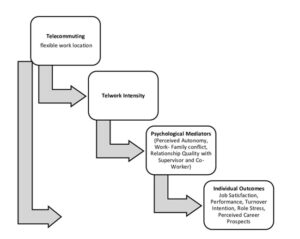
Figure 1: Theoretical framework for the consequences of telecommuting
Source: own depiction based on Gajendran and Harrison (2007)
Methods
This research intends to answer the following research question: Does the change in the quantitative scope and quality of teleworking influence job satisfaction during the Coronavirus Pandemic? To answer the proposed research question, an extensive literature review and a qualitative literature analysis were carried out. For this purpose, the following databases/library catalogues were used for literature searches: Springer Link, SCOPUS, Research Gate, Google Scholar, Google Search, Wiley Online Library, Forbes, JSTOR and Harvard Business Review. The following search terms were used as part of a targeted literature search: ‘Telecommuting scope before the Coronavirus Pandemic’, ‘Telecommuting scope during the Coronavirus Pandemic’, ‘Telecommuting and its impact on job satisfaction before the Coronavirus Pandemic’, ‘Telecommuting and its impact on job satisfaction during the Coronavirus Pandemic’.
Quantitative and qualitative data from scientific studies with a cross-sectional, meta-analysis and longitudinal character were collected and analysed. The main field of analysis is the Human Resource Management. Data included descriptive statistics and were deductively analysed. Thereby, tables, graphs and charts with nominal, ordinal and metric data of interviews and surveys are collected and analysed. All analysed research papers included a sum of 699529 employees and managers aged between 20 and 65 as probands. An elaboration of the theoretical basics targeted for the selected problems is required for achieving the goals.
The literature research identified, in total, 17000 worldwide researches before the Coronavirus Pandemic and 703 during the Pandemic. 70 elaborated potential sources and 34 relevant sources between 1991 and 2020 are attached as references. Researches were also searched through reference lists of existing articles. Some of those works lacked data. They were more of instructional guidelines on setting up remote work arrangements than empirical data outcomes. All sources that corresponded to the generally valid scientific requirement, in terms of the level of details and quality of the elaboration, were classified as relevant. Relevant data were collected, categorized, and analysed.
In the process, the literature has been coded with the MAXQDA software (Kuckartz, 2020). For this purpose, one main code, reflecting the ‘’Corona effect’’, leads to two ‘’1. level subcodes’’, represented by the upper terms of bankruptcies and teleworking. Five ‘’2. level-subcodes’’ are contributed by the topic field ‘’telework’’, from which six ‘’3. level-subcodes’’ were defined inductively and deductively. The present literature was encoded according to the method of structured content analysis. Thereby, passages were encoded in 684 codings and subsequently analysed in relation to the research question. Synthesizing all data, the following results and conclusion were reached.
The frequent individual research reflected similar results and could lead to an inductive relation leading to possible recommendations. Figure 2 shows the sequences of the process within the structured content analysis related to the research question. The text work consisted of a text review, while the categories of the topic related to the analysing field were formed. Relevant sources were analysed and classified into these categories by elaborating their relation to each other. For an overview of the Structured Content Analysis approach, see Figure 2.
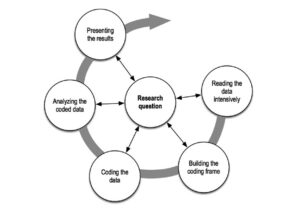
Figure 2: The five phases of qualitative content analysis
Source: Kuckartz (2019)
For an overview of the created codes and subcodes, as well as their hierarchy, see Figure 3.
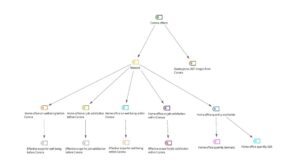
Figure 3: Hierarchical code-subcodes model by MAXQDA
Source: own depiction
Results
The results are driven from a structured synthesis of all included studies. The final sample is made up of 34 studies involving 699529 probands from single studies, including two meta-analyses. Three of the total researches analyse teleworking and its influence on only one dimension, i.e. job satisfaction. All other investigations considered more than one dimension affecting working individuals’ well being, namely affective, cognitive, social, professional, and psychosomatic dimensions.
In the research, there was an international representation of countries, like the USA, Austria, Germany, Swiss and Belgium, where studies were conducted. Considering table 1, as a cutout of a tabular overview specifying the researcher, the topic, the research field with their analytical parameters, proband-sample-size and publish date, it becomes clear that the authors use various data-pools and have analysed various dimensions with different variables and conditions in relation to teleworking within different times.
It has become clear that until the COVID-19 crisis, the share of remote workers shows inconsistent results. According to Statista (2020b), based on a survey with 800 interviewed German HR managers conducted by the Ifo-Institute in the second quarter of 2020, it was stated that around 40% of the workforce in companies managed to work permanently from home before the Coronavirus crisis. As a result of the Pandemic, this distribution has increased by around 20%, reaching around 60%.
Contrasting to Ifo-Institute, there is a survey conducted by the Fraunhofer IAO survey (Hofmann, Piele and Piele, 2020) from May 4, 2020 to May 24, 2020, with almost 500 companies from various industries and sizes, including 78% belonging to the private sector and 22% to the public sector. Companies with more than 1000 employees had, by far, the largest share of probands (50%). 54% of the respondents declared that there were only few employees who could use the home office before the Coronavirus crisis. 17% of them depend totally on teleworking. The possible degree of working from home office was largely 1 day per week or less. Before the Coronavirus crisis, around 20% of the workers had the opportunity to work from home for more than 10 days per month. In time of the Coronavirus Pandemic, 70% of the respondents stated that their office workers, almost completely or mostly, work in the home office. 21% follows the model of a 50:50.
The Mannheim Corona Study, led by Blom et al. (2020), revealed different results, indicating that before the Coronavirus crisis, almost 20% of the employees in Germany occasionally or often worked from home. A further 35.4% of the employees wanted to use home office, but could not do so, 13.5% did not want to work from home, and 31.7% said that working from home is not possible in their job. Expectedly, respondents, who worked from home in January 2020, had the largest proportion of working from home office during the Coronavirus Pandemic. In March 2020, almost 70% of those respondents worked from home. In contrast, the majority of the respondents, who expressed a desire to work from home in January 2020, were actually working exclusively at workplace. In March 2020, 57% of them worked at workplace. In June 2020, 61% worked exclusively at workplace and 17% partly at workplace and partly in the home office. Respondents, who do not want to work from home, are also the group that most frequently continues to work exclusively at workplace. In July 2020, more than 70% of this group was again working exclusively at the workplace and almost 10% were working partly at the workplace and partly in the home office.
The data suggest that even during the restrictions due to the Coronavirus Pandemic, it is easier to realize a preference for working at workplace than the desire to work from home. Around 7% of the group, who fundamentally excluded home office from their work in January 2020, were still working from home during the Coronavirus restrictions. This percentage decreases very significantly below 1%. At the end of March, 25% of the employees worked completely or predominantly from home office, in May, only 7% worked exclusively from home office, 22% worked partly from home and partly at workplace.
There is a strong social inequality when working from home office due to the fact that, during the first few weeks of the lockdown, 60% of those working from home were holders of high school diplomas, while only 15% of them were holders of middle school diplomas. Over 50% of the employees in Germany work at workplace at their previous place of work. 25% of the employees work from home office, including, more people with high educational qualifications.
Short time working and job losses affect people with low incomes particulary in jobs related to the hospitality industry, arts and culture. The risks of the Coronavirus Pandemic are unevenly distributed. Lower income groups are more likely to be at greater risk of infection with the Coronavirus due to their work at workplace, in addition to the fact that they were affected earlier by the negative economic effects of the Coronavirus Pandemic.
As for the proportion of the population, who was employed in January 2020, at the end of April, 1.5% are unemployed, 2.5% released without wages, 3.8% released with wages and 13.1% short time workers. Within the previous scope, in June, working at workplace represented 58.9%, working exclusively from home office represented 5.0%, working partly at workplace and partly from home office represented 23.1%.
A survey on workers, conducted by the health insurance DAK, compared a sample of over 7000 probands from December 2019, and of this, a sample of 6000 took part in the second survey in April 2020. 59% of the employees, who recently work from home, said that they work more productively than in their normal workplaces. 75% of the respondents are critical because of the diminished direct contact with colleagues. 48% of them miss having contact with their bosses and 41% miss having access to files.
Another survey was carried out by the Federal Ministry for Agriculture, Regions and Tourism (2020) on the topic ‘Work-life balance through home office’ among employees in Austria in July 2020. A total of 43% of the respondents were of the opinion that the ability to work from home makes it easier to combine between family and work.
It can be stated that the Coronavirus crisis triggered a quantitative increase of the teleworking percentage in the range between 20% and 50%, depending on the survey structure, like the selection of the number and type of probands and branches. Qualitative aspects were also detected and measured quantitatively. The findings of the strong social inequality when using home office are worth mentioning (Blom et al., 2020).
Home office work and job satisfaction before Coronavirus Pandemic
Findings of Schall (2019) on the relationship between remote working and job satisfaction cleared out an existing positive correlation between these two aspects before the Coronavirus Pandemic. An inverted u-shaped curvilinear relationship between the extent of telecommuting intensity and job satisfaction was not found, but instead a positive, linear relationship was found. This current research signalizes that a teleworking intensity with no more than 13,7 hours per week indicates a positive relation between teleworking and job satisfaction, but not a curve linear one. This small sample of 185 surveyed participants did not really use teleworking more than 18 hours per week, and this is why the author defined a positive relation between teleworking and job satisfaction.
The quadratic form of teleworking intensity was used in order to establish whether an inverted u-shaped curvilinear relationship existed between telecommuting intensity and job satisfaction. There was no clear threshold up to which job satisfaction decreases. The confirmation was stated by theoretical statistics and not by collecting real participants’ data. The major implication of the findings is that increasing remote working in the workplace may be an efficient way to increase employees’ job satisfaction levels. According to Schall (2019), remote working influences employees in terms of having higher perceived autonomy, less work-family conflict and more telecommuting intensity, which in turn, influences their job satisfaction.
Compared to previous measurements, especially according to the Gallup Study Report (Clifton, 2017), as for the overall trend, engagement increases between the intervals of those, who don’t work remotely and those, who work remotely, up to 40% of the working time. Golden and Veiga (2005) stated that more than 15,1 hours per week decrease job satisfaction. Contrarily, lower intensities increase job satisfaction.
Home office work and job satisfaction during Coronavirus Pandemic
According to Beart et al. (2020), teleworking during the Coronavirus Pandemic has many positive outcomes, like increased efficiency and better work-life balance. 65.7% of 14,005 probands indicate that their overall satisfaction with their job increases with teleworking. 64.6% think that teleworking improves their work-life balance. According to 48.4% of the employees, teleworking helps decrease work-related stress, and 47.6% of the probands assert that teleworking reduces the chance of burnout. Performance was also positively influenced. 56.3% of the participants affirm that teleworking improves their efficiency in performing tasks, and 50.7% of them confirm that teleworking increases their work concentration. These positive effects of teleworking on job satisfaction, work-life balance, role stress, burnout and performance are in line with the findings of previous studies (Charalampous et al., 2019; Golden and Veiga, 2005). Based on the findings of the OECD report (OECD, 2020), teleworking can improve firm performance by increasing workers’ satisfaction and thus, their efficiency. Better work-life balance, less commuting or fewer distractions lead to more focused work and less absenteeism.
In contrast to the positive effects, workers’ satisfaction decreases with teleworking only due to solitude, hidden overtime, combining private and work life, or an inappropriate working environment at home. In sum, teleworking can improve or hamper firm performance, with its effects, depending on two principles. Companies should notice that firm performance could be affected directly by changing the efficiency, motivation and knowledge creation of the workforce, and indirectly by facilitating cost reduction that frees up resources for enhancing productivity, innovation and reorganization. Table 1 gives an overview about more comprehensive researches with an experimental character by using a high contingent of probands, e.g. employees. Researches related to telecommuting and its influence on job satisfaction before and after Coronavirus Pandemic are analysed and collected.
Table 1: Overview of more comprehensive researches, Part 1/8
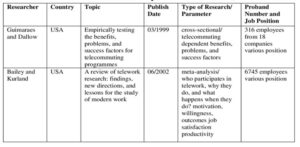
Table 1: Overview of more comprehensive researches, Part 2/8
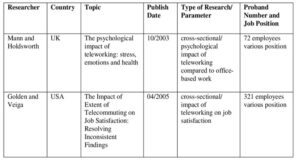
Table 1: Overview of more comprehensive researches, Part 3/8
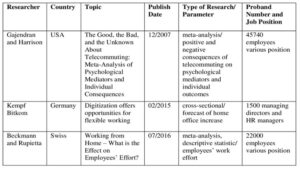
Table 1: Overview of more comprehensive researches, Part 4/8
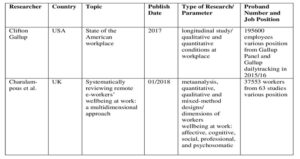
Table 1: Overview of more comprehensive researches, Part 5/8
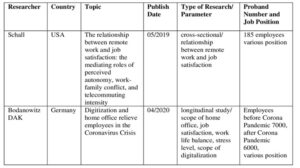
Table 1: Overview of more comprehensive researches, Part 6/8
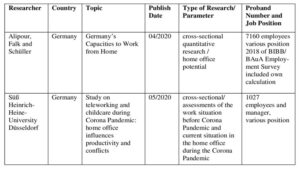
Table 1: Overview of more comprehensive researches, Part 7/8
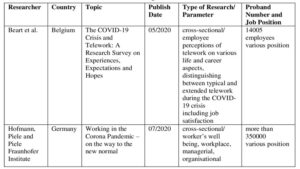
Table 1: Overview of more comprehensive researches, Part 8/8
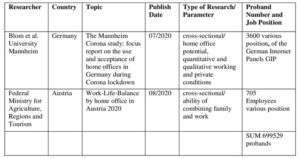
Source: own creation
Discussion
Teleworking and its influence on workers’ job satisfaction and well-being have been extensively analysed and discussed. Job satisfaction has received the most empirical attention. Some conditions related to teleworking could trigger an increase or decrease of job satisfaction. The comprehensive meta-analysis of Charalampous et al. (2019) gives a detailed insight to this working field and the dependent variables. Teleworking is responsible for workers´ positive emotions, to increase their job satisfaction and organizational commitment levels and to ameliorate their feelings of emotional exhaustion. As result of this, teleworkers feel more autonomous.
Exclusively, social isolation could be the reason for a drawback of teleworking. According to Golden and Veiga (2005), analysing a sample of 321 professional-level telecommuters of a high-tech firm, a curvilinear inverted U-shaped relationship between the extent of telecommuting and job satisfaction with job satisfaction appearing to plateau at more extensive levels of telecommuting was revealed. Job satisfaction initially increases as the extent of telecommuting rises. At higher levels of telecommuting, job satisfaction starts to level off, decrease slightly and essentially plateaus. This curvilinear relationship is moderated by several variables, and the curve flattens with jobs higher in discretion and interdependence, and for individuals higher in performance-outcome orientation. In terms of personality, teleworkers with a greater tendency to order and a higher need for autonomy report greater job satisfaction levels than teleworkers with lower needs for order and autonomy. Although this research offers new insights, while the study was correlational and did not involve the manipulation of variables, causality cannot be inferred, the authors emphazised. Moreover, Golden and Veiga (2005) indicated that the threshold 15.1 hours per week, at which job satisfaction plateaus, is not necessarily indicative of the general population of telecommuters. The researchers could not assure, whether telecommuting improves job satisfaction per se, or only that the extent of telecommuting is related to the level of job satisfaction among those who telecommute. In addition, the present research design cannot rule out the possibility of reverse/reciprocal causality between extent of telecommuting and job satisfaction. Specifically, low job satisfaction might cause extent of telecommuting; individuals might telecommute more extensively in order to improve their job satisfaction (Golden and Veiga, 2005), as valuable for practitioners and researchers.
Considering the development of the scope of applying teleworking in companies, it is conspicuous that teleworking in German companies rose from 22% to 39% from 2014 to 2018 (Statista, 2019). Employees have experience with teleworking, both in general and in particular due to the COVID-19 crisis. The Ifo Institute reported that the teleworking scope increased by 20% after the outbreak of COVID-19. Beart et al. (2020) denoted that 65.9% of Flemish workers are completely satisfied with the increase of extended teleworking during the Coronavirus Pandemic. 85% expect that the COVID-19 crisis will expand the scope of teleworking and 81% of them expect digital conferencing will be much more common in the future.
Life conditions changed abruptly in 2020, and teleworking became a need to prevent serious viral infection. The worldwide population is obliged to always comply with keeping distance from others, being called ‘’social distancing’’ as long as the virus is not contained. Office jobs have to be restructured, and teleworking can be easily arranged by companies and employees. It can be assumed that workers’ and companies’ attitude towards teleworking, as an obligatory workplace, is also modified for the coming period. The situation cannot be assessed for the future.
Researches on the Coronavirus Pandemic, in general, and particularly Beart et al. (2020), analysed the number of employees, who are satisfied with extended teleworking during the crisis. This research lacks an evaluation towards extending teleworking in relation to its effects on job satisfaction and productivity, in contrast to Golden and Veiga (2005). In case of the pandemic, it is relevant to analyse workers’ attitude towards teleworking in a precise manner in order to cope with the crisis.
According to Blom et al. (2020) of Mannheim University, there is a strong social inequality when using home office. Lower income groups are more likely to be at greater risk of infection with the Coronavirus due to their work at workplace, in addition to the fact that they were affected earlier by the negative economic effects of the Coronavirus Pandemic. This is a disruptive factor, which generally has a negative influence on workers’ job satisfaction and real well-being. Companies were interested in finding new ways to create new solutions and combinations of telecommuting arrangement e.g. co-working and teleworking for the last five years. Interesting results were gained from a one-year co-working experiment with 5 companies in cooperation with the Village Office Cooperative (Jacob et al., 2019). It deals with the question: What are the specific value propositions and benefit scenarios does co-working offer established companies? Further research on the subject of teleworking and co-working via a new model by eliminating the negative affecting mediators of job satisfaction within teleworking could be progressive for companies’ work structure. For established companies, the question is: How does co-working fit into existing forms of work (corporate office, home office, mobile work) and what influence does this new scenario have on the existing culture of collaboration? (Weibel and Sapegina, 2018).
In fact, companies have to implement hygiene rules at workplace and arrange a new working structure for the future. Researches of 2020, focusing on workplace in times of COVID-19 and its relation to job satisfaction cannot give precise results since the current challenge faced by companies has only existed for 7 months. The OECD report (OECD, 2020) summarized the following coherences, which could help give a guideline for companies and provide researchers with new ideas for studies:
- Widespread teleworking may remain a permanent feature of the future working environment, catalyzed by the experiences made with teleworking during the COVID-19 crisis.
- The use of teleworking before the crisis varied substantially across countries, sectors, occupations and firms, which suggests a large scope for policies to contribute to the spread of teleworking.
- While more widespread teleworking, in the longer-run, has the potential to improve productivity and a range of other economic and social indicators (worker well-being, gender equality, regional inequalities, housing, emissions), its overall impact is ambiguous and carries risks especially for innovation and workers.
- To minimize the risks of more widespread teleworking, harming long-term innovation and decreasing workers’ well-being, policy makers should assure that teleworking remains a choice and is not ‘overdone’. Co-operation among social partners may be the key to address concerns, e.g. of ‘hidden overtime’.
- To improve the gains from more widespread teleworking for productivity and innovation, policy makers can promote the diffusion of managerial best practices, self-management and ICT skills, investments in home offices, and fast and reliable broadband across the country.
These correlations, summarized by the OECD (Organisation for Economic Cooperation and Development), are worth mentioning and lead to a new research ground. Connecting previous research results with analysed new conditions generated by the crisis of Coronavirus Pandemic will open new niches for researchers and companies. The crisis requires new advanced methods to reach more robust and adapted conclusions. For instance, more cross sectional and longitudinal data is something that obstructs the ability to define causation and the actual direction for most of the relationships discussed in previous researches, along with this one, regarding the new situation. There is a need to reveal mechanisms, crisis dependent dimensions and limitations. Additionally, it would be useful to conduct more diary studies, which will allow researchers to capture an individual change on levels of well-being, as opposed to a cumulative group change. An advantage of this method is that it decreases retrospective bias, which often threatens the validity of cross-sectional surveys.
Conclusions
The present study aims to give an overview of the previous literature related to the relationship between teleworking and its influence on job satisfaction with regard to the current literature in relation to the challenge of the sudden Pandemic. In particular, it can help understand the new experience of working from home for the first time and to know the satisfaction level of this work type. Furthermore, an insight is given to the changing conditions of experienced teleworkers during the Pandemic. A clarification of the changing extent of teleworking and job satisfaction should be given. According to previous findings of teleworking, respondents working from home will be willing to keep working like that as to be protected from the virus, and their tendency towards teleworking will increase if they are experiencing a good and supportive environment to work from home.
Understanding the needs of employees provides employers with an opportunity to help their employees by constructing a supportive and controlled work environment, which may result in a higher number of workers showing increased affinity to work from home. As for controlling the problems, e.g. of social inequality dimensions revealed from the current comprehensive study results of the Mannheim University and the coherence findings of the OECD (2020), researchers and practitioners are able to elaborate and implement new COVID-19 adequate structures into the managerial departments and workplaces. This increases the probability for employees to have higher job satisfaction and efficiency.
The attention for good protection measures against the virus must not be neglected. Protection against the possible infection of COVID-19 and its possible long-term consequences is the assurance against absenteeism. The results of the present study provide a cutout of potential ways for future research. It includes different opinions of employees towards working from home across the states. The impact of the Pandemic affects some people more strongly than others, due to their age, income, academic status, personality and gender.
COVID-19 exposed how vulnerable we all are, including employees and employers. Businesses around the world have to be restructured in order to have a future. Workers have to be retrained or they will be at risk of losing their jobs. New plans are needed to minimize health costs and also economic costs due to the current situation.
References
- Alipour, JV., Fadinger, H. and Schymik, J., (2020), ‘My home is my castle: The benefits of working from home during a pandemic crisis. Evidence from Germany,’ CRC TR 224 Project B 06 University Bonn Germany. [Online], [Retrieved September 3, 2020]. https://www.crctr224.de/en/research-output/discussion -papers/archive/2020/DP178/view
- Alipour, JV., Falk, O., and Schüller, S., (2020), ‘Germany’s Capacities to Work from Home,’ Institute of Labor Economics Bonn Germany. [Online], [Retrieved September 5, 2020], http://ftp.iza.org/dp13152.pdf
- Allen, DG., Shore, LM. and Griffeth, RW. (2003), ’The Role of Perceived Organizational Support and Supportive Human Resource Practices in the Turnover Process,’ Journal of Management, 29(1), 99-118.
- Allen, D., Renn, R. and Griffeth, R. (2003), ‘The Impact of Telecommuting Design on Social Systems, Self-Regulation, and Role Boundaries,‘ Research in Personnel and Human Resources Management, 22, 125-163.
- Apgar, M., (1998), ‘The Alternative Workplace: Changing Where and How People Work,’ Havard Business Review. [Retrieved September 3, 2020], [Online], https://hbr.org./1998/05/the-alternative-workplace-changing-where-and-how-people-work
- Bailey, DE. and Kurland, NB. (2002), ‘A Review of Telework Research: Findings, New Directions, and Lessons for the Study of Modern Work,’ Journal of Organizational Behavior, 23(4), 383–400.
- Beart, S. et al., (2020), ‘The COVID-19 Crisis and Telework: A Research Survey on Experiences, Expectations and Hopes,’Institute of Labor Economics Bonn Germany. [Online], [Retrieved September 5, 2020], http://ftp.iza.org/dp13229.pdf
- Beckmann, M. and Rupietta, K., (2016), ‘Working from home: What is the effect on employees’ effort?,’ Center of Business and Economics (WWZ) University Basel. [Online], [Retrieved September 3, 2020], https://core.ac.uk/download/pdf/154352834.pdf
- Bellmann, L. and Hübler, O., (2020), ‘Job Satisfaction and Work-Life Balance: Differences Between Homework and Work at the Workplace of the Company,’ Institute of Labor Economics Bonn Germany. [Online], [Retrieved September 8, 2020], https://www.econstor.eu/bitstream/10419/223946/1/dp13504.pdf
- Blom, AG. et al., (2020), ‘The Mannheim Corona Study: Focus report on the use and perception of home office in Germany during the Corona Lockdown, ’Mannheim Germany: University Mannheim. [Online], [Retrieved September 1, 2020], https://madoc.bib.uni-mannheim.de/55628/?rs=true&
- Bodanowitz, J., (2020), ‘Digitization und home office relieves employees in the Corona virus crisis,’ DAK Heath Strategic Management Department Bonn Germany. [Online], [Retrieved September 3, 2020], https://www.dak.de/dak/bundesthemen/sonderanalyse-2295276.html#/
- Braikovskaia, J. and Margraf, J. (2020), ‘Predicting adaptive and maladaptive responses to the Coronavirus (COVID-19) outbreak: A prospective longitudinal study,’ International Journal of Clinical and Health Psychology, 20(3), 183-191.
- Charalampous, M. et. al. (2018), ‘Systematically reviewing remote e-workers’ well-being at work: a multidimensional approach,’ European Journal of Work and Organizational Psychology, 28(1), 51–73.
- Clifton, J., (2017), ‘State of the Global Workplace,’ GALLUP PRESS New York USA. [Online], [Retrieved 1, September 2020], https://www.gallup.com/workplace/257552/state-global-workplace-2017.aspx
- Dubrin, AJ. (1991), ‘Comparison of the Job Satisfaction and Productivity of Telecommuters versus in-House Employees: A Research Note on Work in Progress,’ Psychological Reports, 68(3), 1223-1234.
- European Parliament Brussels, (2019), ‘Demographic trends in EU region 2019,’ EPRS European Parliamentary Research Service Brussels Belgium. [Online], [Retrieved September 7, 2020], https://ec.europa.eu/futurium/en/system/files/ged/eprs-briefing-633160-demographic-trends-eu-regions-final.pdf
- Federal Ministry for Agriculture, Regions and Tourism, (2018), ‘Telework – what is it and which advantages does it have?,’ Federal Ministry for Agriculture, Regions and Tourism Wien Austria. [Online], [Retrieved August 30, 2020], https://www.bmlrt.gv.at/ministerium/dafuer-stehen-wir/teleworking/vorteilehtml
- Feldmann, DC. and Gainey, TW. (1997), ’Patterns of telecommuting and their consequences: Framing the research agenda,’ Human Resource Management Resource, 7(4), 369-388.
- Fernández-Macias, E. and Muñoz de Bustillo Llorente, R. (2014), Job Satisfaction, Encyclopedia of Quality of Life and Well-Being Research, Michalos A.C. (eds), Springer, Dordrecht.
- Gajendran, RS. and Harrison, DA. (2007), ‘The Good, the Bad, and the Unknown About Telecommuting: Meta-analysis of Psychological Mediators and Individual Consequences,’ Journal of Applied Psychology, 92(6), 1524-1541.
- Glass, JL. and Noonan, MC. (2016), ’Telecommuting and Earnings Trajectories Among American Women and Men,’ Social Forces, 95(1), 217-250.
- Golden, TD. and Veiga, JF. (2005), ’The Impact of Extent of Telecommuting on Job Satisfaction: Resolving Inconsistent Findings,’ Journal of Management, 31(2), 301-318.
- Guimaraes, T. and Dallow, P. (1999), ’Empirically testing the benefits, problems, and success factors for telecommuting programmes,’ European Journal of Information Systems, 8(1), 40-54.
- Hofmann, J., Piele, A. and Piele, C., (2020), ‘Working while Corona Pandemic-on the way to normal,’ Fraunhofer IAO Stuttgart Germany. [Online], [Retrieved September 1, 2020], http://publica.fraunhofer.de/starweb/servlet.starweb?path=urn.web&search=urn:nbn:de:0011-n-5934454
- Hook, A. et al., (2020), ‘A systematic review of the energy and climate impacts of teleworking,’ Environmental Research Letters. [Online], [Retrieved September 1, 2020], https://doi.org/10.1088/1748-9326/ab8a84
- Jacob, JI., Bond, JT., Galinsky, E. and Hill, JE. (2008), ‘Six Critical Ingredients in Creating an Effective Workplace,’ The Psychologist-Manager Journal, 11(1), 141-161.
- Josef, B. et al., (2019), ‘Cowork from a business perspective– Out of Office, into the Flow?,’ University St. Gallen Swiss. [Online], [Retrieved September 6, 2020], https://www.alexandria.unisg.ch/256520/1/Coworkingstudie_2019.pdf
- Kempf, D., (2015), ‘Digitization offers opportunities for flexible working,‘ Bitkom Research Berlin Germany. [Online], [Retrieved September 5, 2020], https://www.bitkom.org/Presse/Presseinformation/Digitalisierung-bietet-Chancen-fuer-flexibles-Arbeiten.html
- Kniffin, KM. et al., (2020), ‘COVID-19 and the Workplace: Implications, Issues, and Insights for Future Research and Action,’ American Psychologist. [Online], [Retrieved September 5, 2020], https://doi.org/10.1037/amp0000716
- Kossek, EE., Lautsch, BA. and Eaton, SC. (2009), “Good Teleworking”: Under What Conditions Does Teleworking Enhance Employees’ Well-being?, Technology and Psychological Well-Being, Amichai- Hamburger, Y. (ed), Cambridge University Press, Cambridge England.
- Kuckartz U. (2019), Qualitative Text Analysis: A Systematic Approach. Kaiser G., Presmeg N. (eds),
- Compendium for Early Career Researchers in Mathematics Education. ICME-13 Monographs. Springer,Cham.
- Kuckartz, U., (2020), ‘The best choice for your Qualitative & Mixed Methods Analysis,’ VERBI GmbH Invalidenstraße 74, 10557 Berlin, Germany. [Online], [Retrieved September 17, 2020], https://www.maxqda.de/about
- Mann, S. and Holdsworth, L. (2003), ’The psychological impact of teleworking: stress, emotions and health,’ New Technology, Work and Employment, 18(3), 196-211.
- Messenger, JC. and Gschwind, L. (2016), ‘Three generations of Telework: New ICTs and the (R)evolution from Home Office to Virtual Office,’ New Technology, Work and Employment, 31(3), 195-208.
- OECD, (2020), ’Productivity gains from teleworking in the post COVID-19 era: How can public policies make it happen?,’ Secretary-General of the OECD Brussels Belgium. [Online], [Retrieved September 7, 2020], http://www.oecd.org/coronavirus/policy-responses/productivity-gains-from-teleworking-in-the.post-covid-19-era-a5d52e99/#p-d1e698
- O’Neill, TA. et al. (2009), ’Predicting teleworker success: An exploration of personality, motivational, situational, and job characteristics,’ New Technology, Work & Employment, 24(2), 144-162.
- Padilla-Meléndez, A. and Del Aguila-Obra, A. (2008), Telework in the Context of E-Collaboration, Encyclopedia of E-Collaboration, Kock, N. (ed), Texas A&M International University, USA
- Schall, MA., (2019), ‘The Relationship Between Remote Work and Job Satisfaction: The Mediating Roles of Perceived Autonomy, Work-Family Conflict, and Telecommuting Intensity,’ San Jose State University California USA. [Online], [Retrieved September 29, 2020], https://scholarworks.sjsu.edu/contact.html
- Shan, C. and Tang, YC., (2020), ‘The Value of Employee Satisfaction in Disastrous Times: Evidence from COVID-19,’ SSRN Electric Journal. [Online], [Retrieved September 1, 2020], http://dx.doi.org/10.2139/ssrn.3560919
- Statista, (2019), ‘Do individual employees work entirely or partially from their home office?,‘ Statista Hamburg Germany January 2019. [Online], [Retrieved September 10, 2020], https://de.statista.com/statistik/daten/studie/964479/umfrage/umfrage-zur-nutzung-von-homeoffice-in-deutschen-unternehmen/ Statista, (2020), ’Bankruptcies: The Calm Before the Storm,’ Statista Hamburg Germany June 2020. [Online], [Retrieved September 1, 2020], https://de.statista.com/infografik/22700/progonose-zur-entwicklung-der-unternehmensinsolvenzen/· Statista, (2020), ‘Corona crisis: Share of the workforce who worked in the home office, currently works or could theoretically work in Germany in the 2. Quartile 2020,’ Statista Hamburg Germany August 2020. [Online], [Retrieved August 29, 2020], https://de.statista.com/statistik/daten/studie/1140049/umfrage/corona-krise-homeoffice-nutzung-und-potenzial/ · Steiner-Ostermann, D. (2018): Telework – what is it and which advantages does it have? Federal Ministry for Agriculture, Regions and Tourism, Vienna.
- Süß, S., (2020), ’Telework and childcare within Corona: Homeoffice influences productivity and conflicts,’ Heinrich Heine University Düsseldorf Germany. [Online], [Retrieved September 1, 2020], https://www.orgaperso.hhu.de/de/unsere-forschung/studie-zum-thema-arbeiten-im-homeoffice-waehrend-der-corona-pandemie.html
- Weibel, A. and Sapegina, A., (2018), ‘Coworking: Special work with potential, ‘ HSG Focus University St. Gallen. [Online], [Retrieved August 29, 2020], https://magazin.hsgfocus.ch/hsg-focus-1-2018-arbeit/artikel/coworking-eine-arbeitsform-mit-potenzial-12184 Woolfolk, A. (2010), Educational psychology, Modular Active Learning Edition, Woolfolk A. (ed), Pearson, New Jersey.













